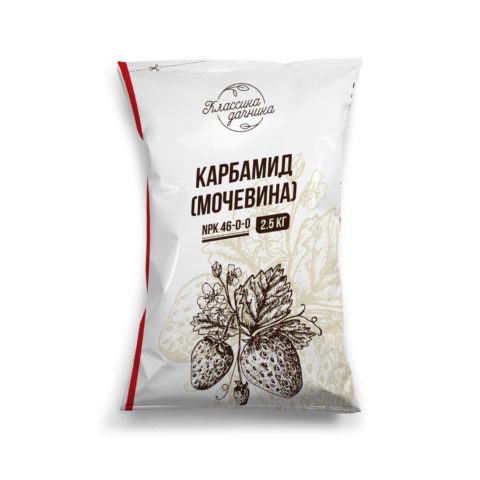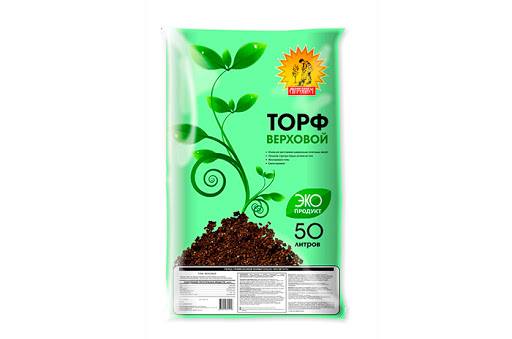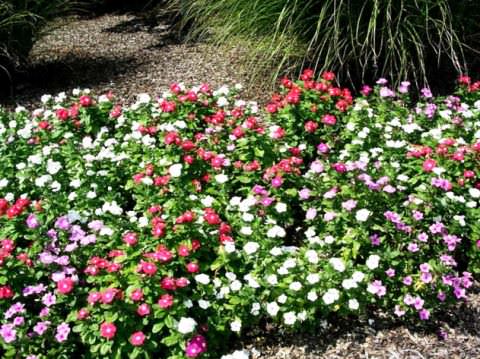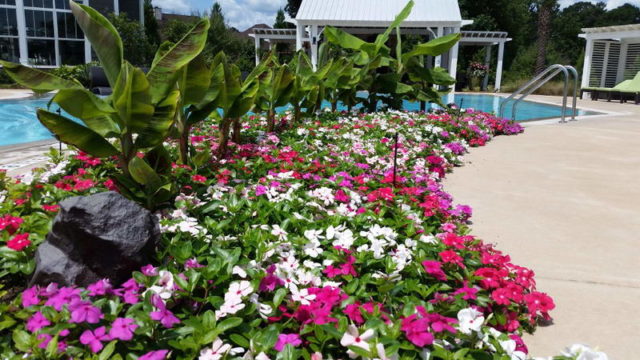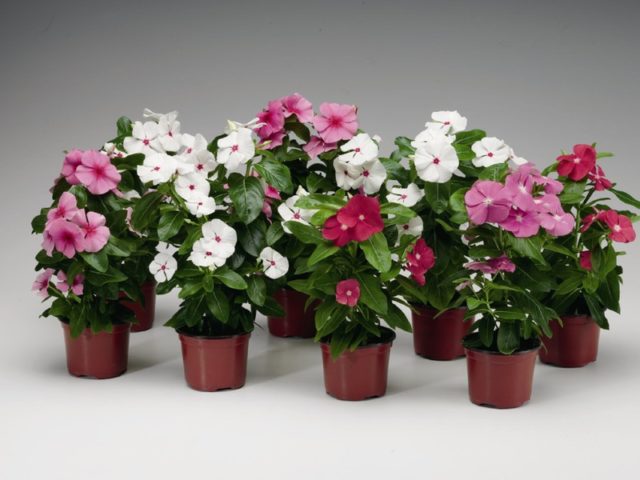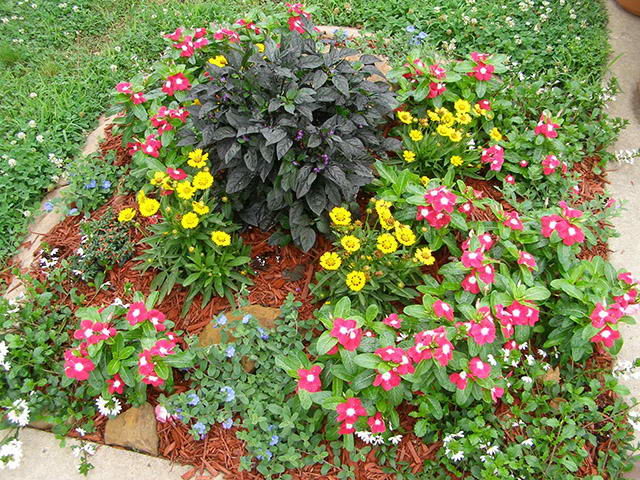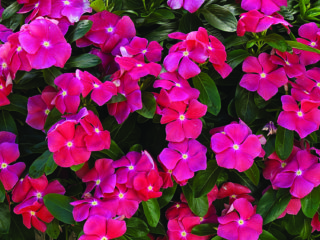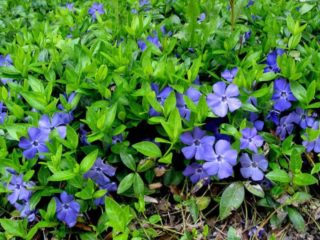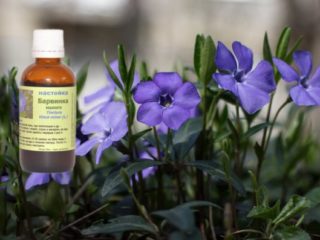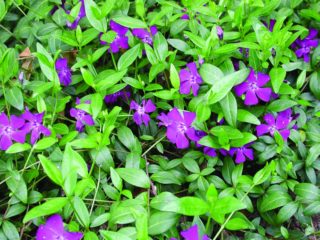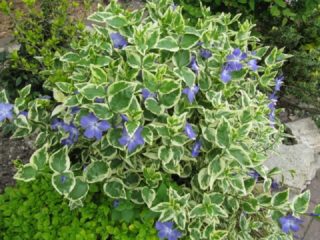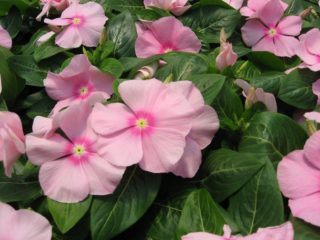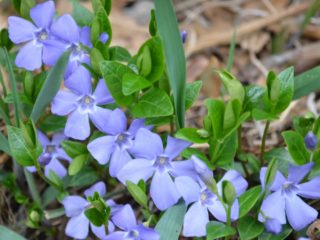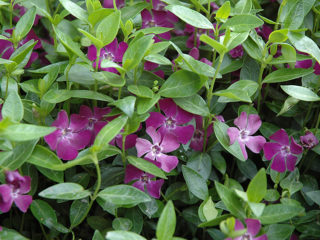Content
Periwinkle Riviera F1 is a perennial ampelous flower that can be grown both at home and in open ground (provided it is wintered in a heated room). It is distinguished by lush, long-lasting flowering throughout the summer and easy care. When growing periwinkle, the main attention should be paid to watering, fertilizing and preparing for the cold season.
Description
Periwinkle Riviera is a hanging plant that is grown at home, but recently it has often been used in territory design. Creeping shoots along the ground with dense foliage and pleasant flowers decorate the garden. They cover unattractive corners and attract attention, and also create a pleasant backdrop for other plants.
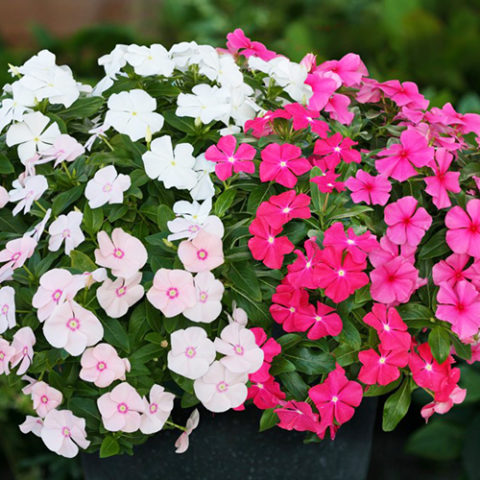
Periwinkle Riviera belongs to the first generation hybrids (F1)
In open ground, it is bred as an annual, transferring it to a heated room for the winter. The Riviera periwinkle is small in height - only 15-20 cm, but its shoots are long enough, which allows them to spread within a radius of 50-70 cm from the growth point. Shades of flowers: white, red, scarlet, pink.
Riviera periwinkle blooms almost all summer, from June to mid-September. The flowers reach 4-5 cm in diameter, but their large number attracts attention. Caring for the Riviera periwinkle is quite simple. The main condition is to provide him with a comfortable winter.
Growing from seeds
Periwinkle ampelous Riviera can be bred at home, including growing from seeds.
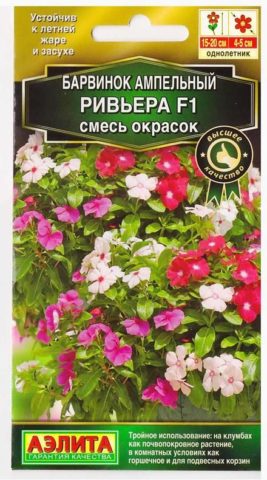
Seed germination is very high: according to the experience of summer residents, more than 80%
There are 2 sowing dates:
- early May (the soil should have time to warm up);
- early September (before winter).
In some cases, if the deadlines are missed, it is possible to plant Periwinkle Riviera seeds even in early summer (the first half of June). But the flowering time will accordingly shift by 1.5-2 months. However, flowers will still appear at the end of summer.
Periwinkle planting technology is standard:
- First you need to clean and dig up the flowerbed.
- If the soil is depleted, add overripe compost or humus with mineral fertilizer (50 g/m2).
- Make furrows and plant the seeds to a depth of no more than 1 cm.
- Water and cover with film (if planted in spring).
- When the sprouts get stronger, 5-7 leaves appear on them, the film can be removed.
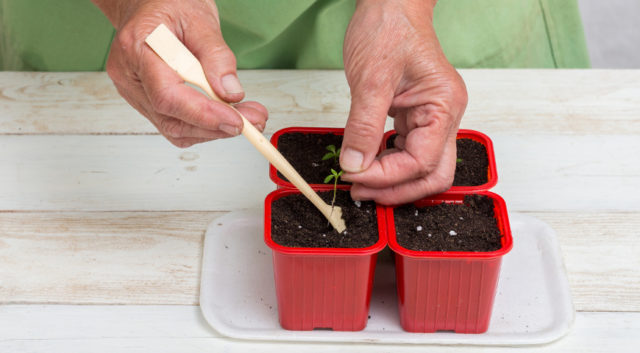
You can grow Riviera periwinkle seeds with or without picking
In the first case, they are sown very close and then separated. In the second, they are immediately planted at a distance of 20-40 cm or more, depending on the desired planting density.
Planting in open ground and care
In the garden, Riviera periwinkle is bred as an annual, since it overwinters indoors. You can transfer the flower to open ground in early May (in the south - in mid-April).
Site selection and preparation
When choosing a place to plant Riviera periwinkle, pay attention to the following requirements:
- the crop needs partial shade from large shrubs or trees;
- the soil must be sufficiently fertile. The flower prefers a neutral soil reaction. If the earth is acidic or alkaline, it is advisable to carry out neutralization;
- it is preferable to choose a small hill, since a lot of moisture accumulates in the lowlands, which can negatively affect the development of the plant and even lead to the death of Periwinkle;
- The landing site must be protected from strong winds.
The site for the Riviera periwinkle is first prepared: cleaned, dug up and humus and mineral fertilizer are added (if the soil is poor).
Planting stages
It is recommended to plant bushes in a checkerboard pattern with an interval of 15-30 cm. Sequence of actions:
- Several shallow holes are formed.
- If the soil is too wet (groundwater is close), drain the bottom with small stones.
- The periwinkle is carefully removed from the pot along with the earthen lump, trying not to touch the roots.
- Planted in holes and covered with fertile soil (you can mix garden soil with humus and compost in a ratio of 2:1:1).
- Watered.

Riviera periwinkle bushes are mulched with peat, pine needles, straw or other materials
Watering and fertilizing
Periwinkle Riviera does not tolerate frequent watering. If it rains, no additional moisture is required. And even if there is a drought for several days in a row, you need to water it no more than once a week.
It is not necessary to specially feed Riviera periwinkle bushes. However, the plant is very responsive to fertilization:
- in spring - urea or saltpeter;
- in summer - humus and peat compost or a complex mineral composition (2 times per season - in June and July).
Diseases and pests
Periwinkle Riviera, like many other hybrids, is characterized by good resistance not only to weather conditions, but also to diseases and pests. If proper agricultural practices are followed, bushes rarely suffer from infections. But sometimes they can get powdery mildew. An invasion of pests is also possible. The danger to culture is:
- aphid;
- scale insect;
- spider mite and others.
As a preventive measure, it is recommended to maintain moderate watering.

A week after transplanting the Riviera periwinkle, the bush can be treated with any fungicide: Bordeaux mixture, Topaz, Profit, Ordan
If insects are found on the Riviera periwinkle bushes, they can be washed off with water under medium pressure. You can destroy the colony using folk remedies, for example, a solution of ash, laundry soap shavings, baking soda, infusion of onion peels or chopped garlic. You can also spray the plant with insecticides:
- Green soap;
- Confidor;
- Decis;
- Spark.
Trimming
The main pruning of Riviera periwinkle is carried out in early spring (late March or early April). At this point, you need to remove all weak, damaged and dry shoots and leaves. Healthy branches are shortened by a third of their length. If you use scissors for this, their blades must be disinfected.
Preparing for winter
Riviera does not overwinter in open ground, with the exception of the southern regions (where the plant is cut to a stump, hilled up and mulched). Therefore, for the winter they are transplanted into a pot (the only requirement for the soil is looseness) and stored in the light at a temperature of 10-15 ° C. Such conditions can be provided on a loggia, an insulated balcony or in a special utility room or greenhouse.
There is no need to fertilize Riviera periwinkle before winter. The last fertilizing is applied no later than August; it can contain both organic and inorganic substances (with the exception of nitrogen).
Reproduction
There are several available ways to propagate Riviera periwinkle:
- By seeds: they must be purchased in a store or from suppliers, since Riviera is a hybrid, not a variety.
- By layering - any healthy shoot at the end of summer can be sprinkled with a little soil, after which it will quickly take root. It is better to separate the cuttings for next spring.
- Cuttings 15-20 cm long. To do this, an oblique cut is made at the branch, and the cuttings are planted in open ground (in late spring or early autumn) with an interval of 30 cm.
- By dividing an adult bush (at least three years old). It is advisable to divide the bush in mid or late summer. Each division should have at least 2-3 healthy shoots.
Photo in landscape
To decorate the garden, Riviera periwinkle can be used in different ways:
- ground cover (flower carpet);
- mixborders;
- multi-tiered flower beds;
- decoration on the terrace, gazebo;
- compositions with other flowers and ornamental plants.
Periwinkle Riviera harmonizes with small flowers and hostas
Conclusion
Periwinkle Riviera F1 is a hanging plant with flowers produced throughout the summer. Thanks to its long, dense shoots, it is able to completely hide unsightly places in the garden and create a good background for other flowers. Caring for periwinkle is not difficult, so both an experienced gardener and an amateur can cope with this task.
